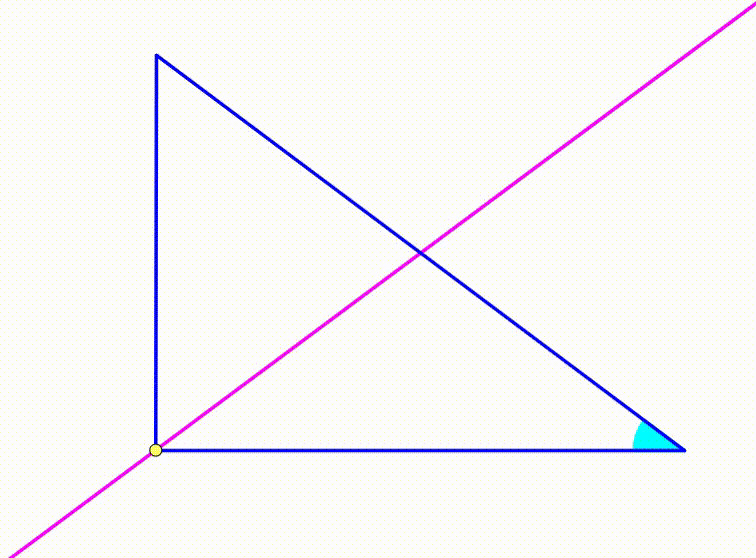Dynamic Geometry: P126
 The blue triangle has a base of length
, an angle (cyan) measuring
, and a variable angle (bottom left) (
). The purple line is the
Euler line
. When the purple line and the right side of the triangle (adjacent to the cyan angle) are parallel, the distance between the yellow and the green point can be expressed as
. Find
.
The blue triangle has a base of length
, an angle (cyan) measuring
, and a variable angle (bottom left) (
). The purple line is the
Euler line
. When the purple line and the right side of the triangle (adjacent to the cyan angle) are parallel, the distance between the yellow and the green point can be expressed as
. Find
.
The answer is 53.
This section requires Javascript.
You are seeing this because something didn't load right. We suggest you, (a) try
refreshing the page, (b) enabling javascript if it is disabled on your browser and,
finally, (c)
loading the
non-javascript version of this page
. We're sorry about the hassle.
From the previous similar problem Dynamic Geometry: P107 , we find that the locus of the circumcenter O of the variable △ A B C is the red line which is the perpendicular bisector of A B at M , the locus of the orthocenter H is the green line, and the locus of the centroid G is the orange line which is parallel to the side B C . If the centroid line intersect A B and C A at D and E , then M D = 3 2 .
Since the Euler line passes through O and G , it is parallel to B C only when O is on the centroid line as shown in the figure (note that H is also on that line as shown by the perfect animation of @Valentin Duringer ). That is the centroid line becomes the Euler line. When that happens, let the perpendicular bisector of B C , which passes through O , intersects A B at K and B C at F . Note that △ B F K , △ D K M , and △ D O M are similar and are all 3 - 4 - 5 right triangle. Since M D = 3 2 , O M = 4 3 ⋅ M D = 2 1 , K M = 4 3 ⋅ O M = 8 3 , K B = K M + M B = 8 1 9 , F B = 5 4 ⋅ K B = 1 0 1 9 , and B C = 2 ⋅ F B = 5 1 9 .
Now note that △ A E D and △ A B C are similar. Then
B C D E = A B A D ⟹ D E = A B A D ⋅ B C = 4 2 + 3 2 ⋅ 5 1 9 = 1 5 3 8
Therefore p + q = 3 8 + 1 5 = 5 3 .